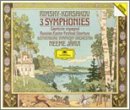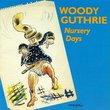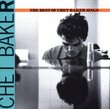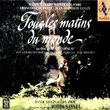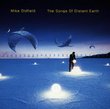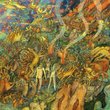| All Artists: Rimsky-Korsakov, Jarvi, Gso Title: Symphonies Members Wishing: 0 Total Copies: 0 Label: Polygram Records Release Date: 10/25/1990 Genre: Classical Styles: Forms & Genres, Theatrical, Incidental & Program Music, Historical Periods, Romantic (c.1820-1910), Symphonies Number of Discs: 1 SwapaCD Credits: 1 UPC: 028942360426 |
Search - Rimsky-Korsakov, Jarvi, Gso :: Symphonies
CD DetailsSimilarly Requested CDs
|
CD ReviewsClassic Interpretations of These Fascinating Works. Paul Rossi | Walla Walla, WA | 05/16/2006 (5 out of 5 stars) "Though not as popular as the symphonies of his contemporary, Alexander Borodin, Rimsky-Korsakov's symphonies are beautiful, well-crafted works with dazzling orchestration and oriental melodies and harmonies. This set, released in 1988, is a collector's item these days. However, DG has re-released it at a budget price. Starting with the First Symphony, Neeme Jarvi and the Gothenburg Symphony play with hushed intensity. They build the music to the first theme, and it moves quickly than any other version--almost too quickly. Jarvi is intimately familiar with this repertoire and his Gothenburg Orchestra is a virtuosic machine making great music! The rhythms are crisp, the brass formidable, and the strings talented and well-coached. The Andante is gorgeous, and Jarvi moves at a spacious tempo to capture the serenity of it. The Scherzo is spritely and athletic, and the Gothenburg really makes great music here. The finale is full of syncopations and modulations, and Jarvi and the orchestra have the full measure of the festive, victorious tone. Next, the performance of Antar is very evocative. The orchestra plays well in tune on the difficult mediant modulations. The woodwinds are very fine, indeed. Jarvi conjures the ominous mood needed to make the opening effective. Again, the strings play marvelously, telling the story of the Gul Peri-Nasar as they do. In Antar's second movement, Rimsky develops an intense winding theme in a Mussorgsky-like way. Its stark, direct language is powerful. The orchestra plays with real power and accuracy. Listening to the third movement, one can hear the effect it had on Balakirev's tone poem, Tamara. Many of the same melodic figurations, harmonies, and scorings are present. Interestingly, Rimsky's Third, one of his least known compositions, has become one of my favorites. Jarvi's woodwinds open with the liturgical-sounding theme, and they play marvelously together. The strings take up the theme and develop it with ease and expertise. Again, the rhythmic integrity required to make it work poses no problems for this great orchestra. Indeed, the following Scherzo was rightly called "a jewel" by Tchaikovsky. In 5/4 meter, it recalls the Scherzo of Borodin's First Symphony in mood, scoring, and form. The orchestra impresses with its virtuosity and enjoyment of the "joke." This performance comes off extremely well and will excite. Jarvi included the "Overture on Liturgical Themes (Russian Easter Overture)" as a filler. Wow! It is played briskly, and the opening plainchant theme is powerful. As usual, the winds play marvelously in this set. They capture the austerity and joy that both pervade this work. The strings move along quickly as the music progresses. The trombone solos are very nice, and the brass play impressively. Jarvi's orchestra is talented enough to keep a quick pace and still make great music. Finally, Rimsky's "Capriccio Espagnol" rounds out the set. It is brilliant, glittering, and full of great dancing music. Jarvi understands and loves this music, and you can hear this as he conducts. The players also enjoy it, and they play with passion, fervor, excitement and accuracy. The violin solos are outstanding, and the clarinetist and harpist are both top-notch. This piece, more than most, requires great ensemble and precision to come off well. The finale is quick and exciting, and this is one of the best performances of the "Capriccio" I have heard. Do not hesitate to pick this set up. It has been reissued at a budget price. However, the cover artwork and collector's status make this particular set more attractive. Plus, the liner notes are well-written and informative. Wait to buy this set used. You'll love it! " Superb echt-Russian Music!... Sébastien Melmoth | Hôtel d'Alsace, PARIS | 11/18/2008 (5 out of 5 stars) ".
OOP set reissued as Rimsky-Korsakov: The Complete Symphonies; Russian Easter Festival Overture; Capriccio Espagnol [Germany] . . It may be well to recall that even as late as the middle of the Nineteenth Century Russia had yet scarcely achieved a "Classical" musical tradition comparable with Austria, Germany, or even France. The artistic intelligentsia admired Beethoven above all; yet, at the same time, despite the Master's universality, the Russians perceived an essential Teutonism in the Austro-German school which ran counter to their own evolving nationalism. And so, beginning with Glinka and moving on through Balakirev, Mussorgsky, Borodin, Cui, and Rimsky-Korsakov--the "Mighty Little Bunch"--(sometimes termed "Kuchkists" for kuchka means "little clutch")--vigorously and adamantly strove to incorporate a native Russian ethos into their music. Of course the Kuchkists had to start somewhere, and withal to a degree they admired the music of Schumann, Berlioz, and Liszt, while Wagner, Bruckner, and Brahms were anathematized. Too, the most cosmopolitian of the Russian set--viz., Tchaikovsky and Rubinstein--were suspect for their Westernism and Hebraism. (Cf. Tchaikovsky's well-known love of Mozart.) The Kuchkists valued idée over style: for them, form followed content. Richard Taruskin puts it very well in saying, "To be a Kuchkist meant to value `color'--piquant timbral and harmonic effects--over `form,' and consequently to be ever on the look-out for pretexts (in Slavonic archaism, in Orientalia, in fantasy) for applying it." . And so we come to Korsakov's Symphonies: several points. Firstly, only the First and Third even attempt to be a symphony in the Austro-German tradition of Haydn, Mozart, and Beethoven. Antar ("Symphony No. 2") is rather a symphonic suite which makes a nice book-end to Sheherazade, and a close parallel to Korsakov's own Overture on Liturgical Themes; Mussorgsky's Night on Bald Mountain; Borodin's In the Steppes of Central Asia; Balakirev's Tamara, Islamey, etc. Secondly, Korsakov's Symphonies are not very long in duration when compared with those of Schumann, Brahms, Bruckner, and Mahler. They feature Korsakov's renowned orchestration with perfumed Near-Eastern Orientalism. (The same is true of Borodin's three symphonies, whilst Balakirev's two are virtually no more than orchestrated versions of his large piano sonatas.) Lastly, Korsakov's Symphonies segue neatly into those of Skryabin, while Arensky, Taneyev, and Glazunov synthesize the cosmopolitian Tchaikovsky-Rubinstein school with Kuchkist nationalism into the truly independent Russian school of Rachmaninov, Myaskovsky, Prokoffiev, and Shostakovich. . En fin, this issue by the GSO with Järvi on DG is probably the finest set of recordings available of this material. The versions of the symphonic texts are authoritatively chosen for authenticity, and the sound is bright and clear. . See too: Sheherazade Borodin: Orchestral Works Borodin: String Quartet No. 1 in A Major; String Quartet No. 2 in D Major Balakirev: Symphony No. 1; Islamey; Tamara Balakirev and Mussorgsky: Piano Music Taneyev: Complete String Quartets, Vol. 1 Ippolitov-Ivanov: Caucasian Sketches; Turkish March and Fragments Scriabin: Complete Piano Sonatas Scriabin: Complete Symphonies ." |

